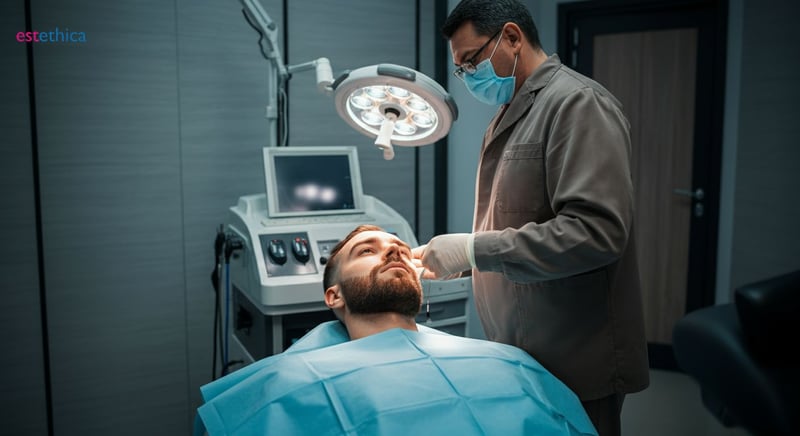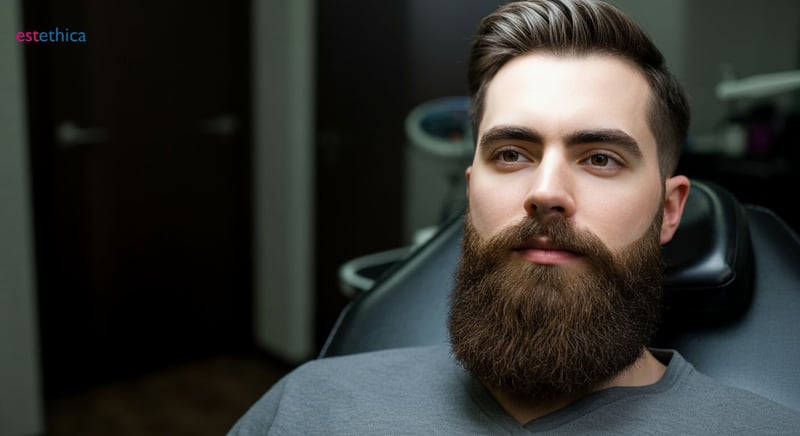Mastering Beard Transplant: Techniques and Insights
Equip yourself with essential knowledge on beard transplants—from procedures to care tips—and enhance your personal style with confidence.
Beard transplants have become an increasingly popular procedure among men looking to enhance their facial hair density and achieve a fuller, more defined beard. This rise in demand is fueled by cultural trends emphasizing masculine aesthetics and personal expression through grooming. Understanding the procedures, techniques, and post-transplant care is crucial for individuals considering this transformative surgery. This guide aims to equip you with the essential knowledge and insights into the world of beard transplants.
Understanding Beard Transplant Procedures
How Beard Transplants Work
A beard transplant involves relocating hair follicles from a donor site, typically the scalp, to the face. This procedure is ideal for those seeking facial hair restoration. Techniques like Follicular Unit Extraction (FUE) and Direct Hair Implantation (DHI) are commonly used. These methods are renowned for producing natural-looking results with minimal downtime. For instance, FUE involves extracting individual hair follicles, while DHI directly implants them into the desired area. This precision ensures a seamless blend with existing facial hair.
Key Benefits of Beard Transplants
- Natural appearance: The transplanted hair grows like natural beard hair.
- Minimal scarring: Advanced techniques ensure minimal visible scarring.
- Quick recovery: Most patients resume normal activities within a few days.
These benefits make beard transplants a popular choice for those looking to enhance their facial hair. The procedure's success stories often highlight the transformative impact on personal confidence and style.
Steps in the Beard Transplant Process
- Consultation: Discuss goals and assess suitability for the procedure.
- Extraction: Harvest hair follicles from the donor site using FUE or DHI.
- Implantation: Carefully place follicles in the beard area for optimal growth.
Understanding these steps helps potential candidates prepare for the procedure. For more insights into beard transplants, explore Unlocking Confidence: The Truth About Beard Transplants.

Exploring the Best Beard Transplant Techniques
Comparing FUE and DHI Methods
When considering a beard transplant, understanding the differences between Follicular Unit Extraction (FUE) and Direct Hair Implantation (DHI) is crucial. FUE involves extracting individual hair follicles and implanting them into the beard area. This method is known for its precision and minimal scarring. On the other hand, DHI uses a specialized tool to implant hair directly, avoiding incisions and promoting a quicker recovery. Both techniques offer customizable solutions based on individual facial structures and hair growth patterns.
Advantages of Advanced Techniques
- Customizable approach: Tailored to fit unique facial structures and hair growth.
- Natural results: Techniques ensure seamless integration with existing hair.
- Minimal downtime: Patients often resume normal activities swiftly.
These advanced methods are designed to provide a natural appearance, enhancing personal style and confidence. The choice between FUE and DHI often depends on individual needs and desired outcomes, making consultations with a beard transplant clinic essential for optimal results.
Understanding Beard Transplant Costs
- Consultation: Initial assessment to determine the best technique and scope.
- Procedure: Execution of the chosen method, tailored to individual needs.
- Post-care: Follow-up to ensure successful integration and growth.
While the cost of a beard transplant can vary, understanding the process helps in making informed decisions. It's important to consider factors like the clinic's reputation and the surgeon's expertise when evaluating options.

Unveiling Beard Transplant Success Stories
Transformative Impact on Personal Confidence
Beard transplants have become a game-changer for many, offering more than just aesthetic improvements. Clients often report a significant boost in self-confidence post-procedure. For instance, one individual noted how the newfound facial hair allowed him to experiment with different styles, enhancing his personal image. Another client shared that the procedure helped him overcome insecurities about patchy beard growth, leading to a more positive self-image. These transformations highlight the profound psychological benefits that accompany the physical changes.
Diverse Success Stories
- Enhanced personal style: Clients explore new grooming styles post-transplant.
- Increased social confidence: Many feel more comfortable in social settings.
- Professional advantages: A fuller beard can enhance professional presence.
These success stories underscore the multifaceted benefits of beard transplants, extending beyond mere appearance to impact various aspects of life. The procedure's ability to restore facial hair and confidence simultaneously makes it a sought-after solution for those seeking change.
Factors Influencing Beard Transplant Satisfaction
- Realistic expectations: Understanding potential outcomes enhances satisfaction.
- Choosing the right clinic: A reputable beard transplant clinic ensures quality results.
- Post-procedure care: Adhering to aftercare instructions maximizes success.
These factors play a crucial role in the overall satisfaction of beard transplant clients. By setting realistic expectations and selecting a skilled clinic, individuals can achieve the desired results, further contributing to their personal and professional lives.
Navigating Post-Transplant Care for Optimal Results
Essential Post-Transplant Care Practices
Post-operative care is crucial for the success of a beard transplant. Patients must adhere to a structured regimen to ensure optimal healing and hair growth. This includes avoiding direct sunlight and refraining from touching the transplanted area to prevent infection. Additionally, maintaining a clean environment around the transplant site is vital. For instance, using a gentle cleanser can help keep the area free from bacteria, promoting faster recovery.
Key Components of Effective Aftercare
- PRP therapy: Enhances healing and stimulates hair growth.
- Vitamin supplementation: Supports overall health and hair vitality.
- Hydration: Essential for maintaining skin elasticity and health.
These components are integral to a successful recovery, ensuring that the transplanted hair follicles thrive. By following these guidelines, patients can achieve the desired results, showcasing the transformative potential of beard transplants.
Steps to Ensure Optimal Results
- Follow prescribed routines: Adhere to the clinic's aftercare instructions diligently.
- Monitor progress: Regularly check for any signs of complications.
- Consult with your clinic: Schedule follow-up appointments to assess growth and health.
These steps are designed to maximize the success of the transplant, ensuring that patients enjoy a fuller, natural-looking beard. By committing to these practices, individuals can enhance their facial hair restoration journey, achieving both aesthetic and personal satisfaction.
Advanced Beard Transplant Techniques: FUE and DHI
Comprehensive Post-Transplant Care for Optimal Results
Frequently Asked Questions
How does a beard transplant work?
What is the recovery time for a beard transplant?
Are beard transplants permanent?
What are the best beard transplant techniques?
What factors influence beard transplant success stories?
Discover the path to your healthiest and most beautiful self with estethica's award-winning services. Contact us today for a free consultation and let our expert team guide you towards the best solutions tailored just for you.
📞 Call Now for Your Free Consultation